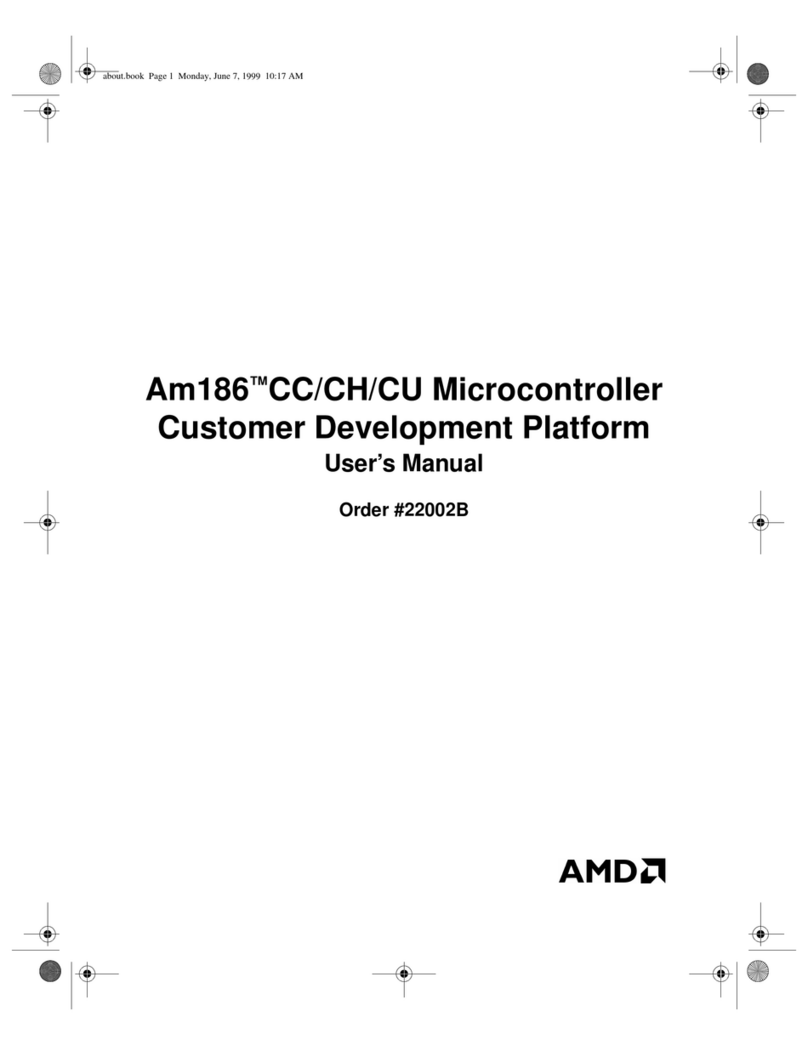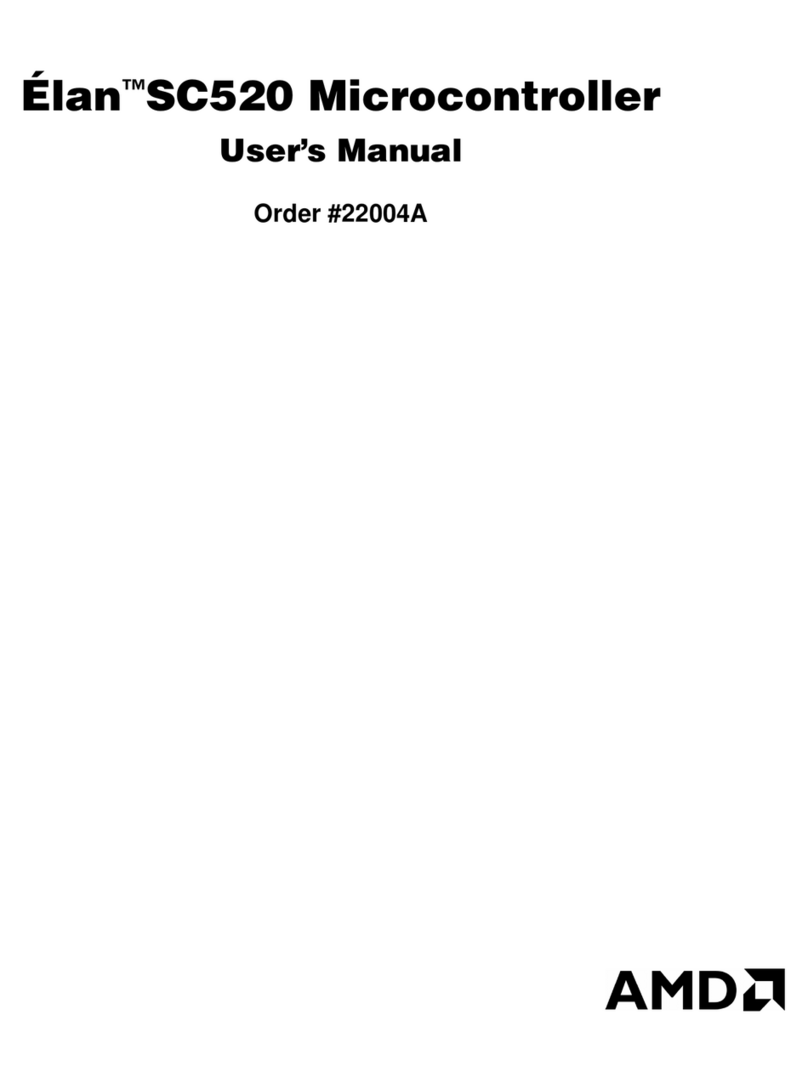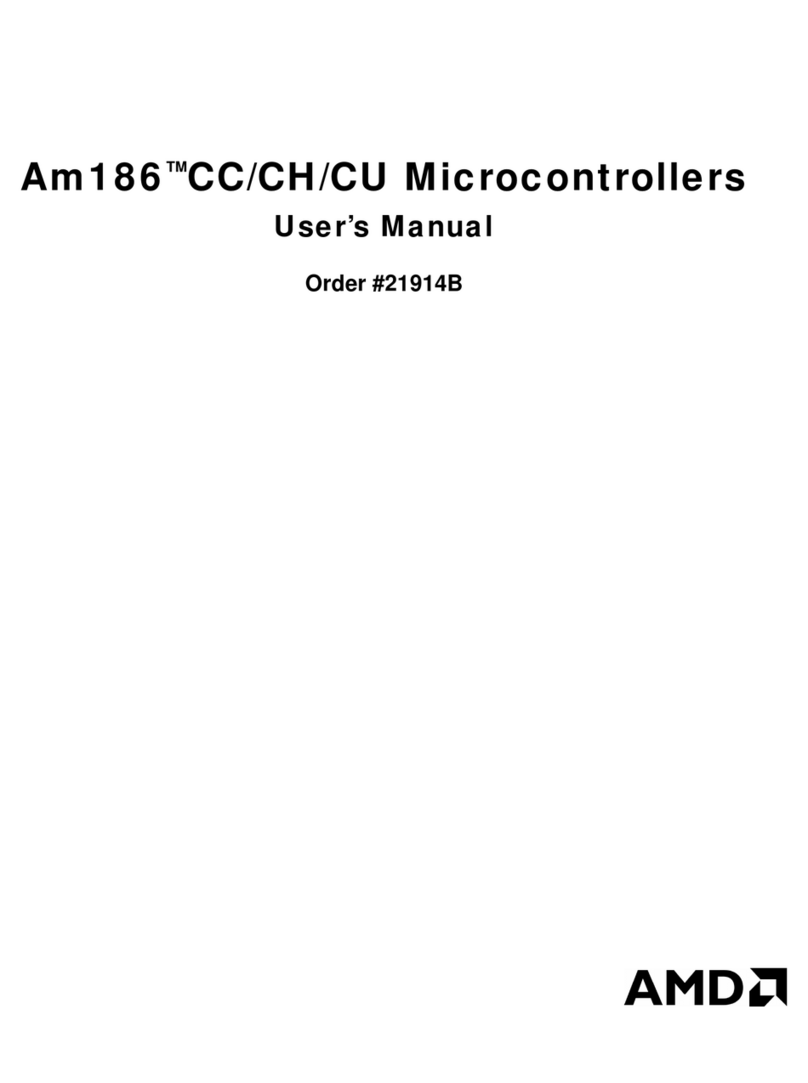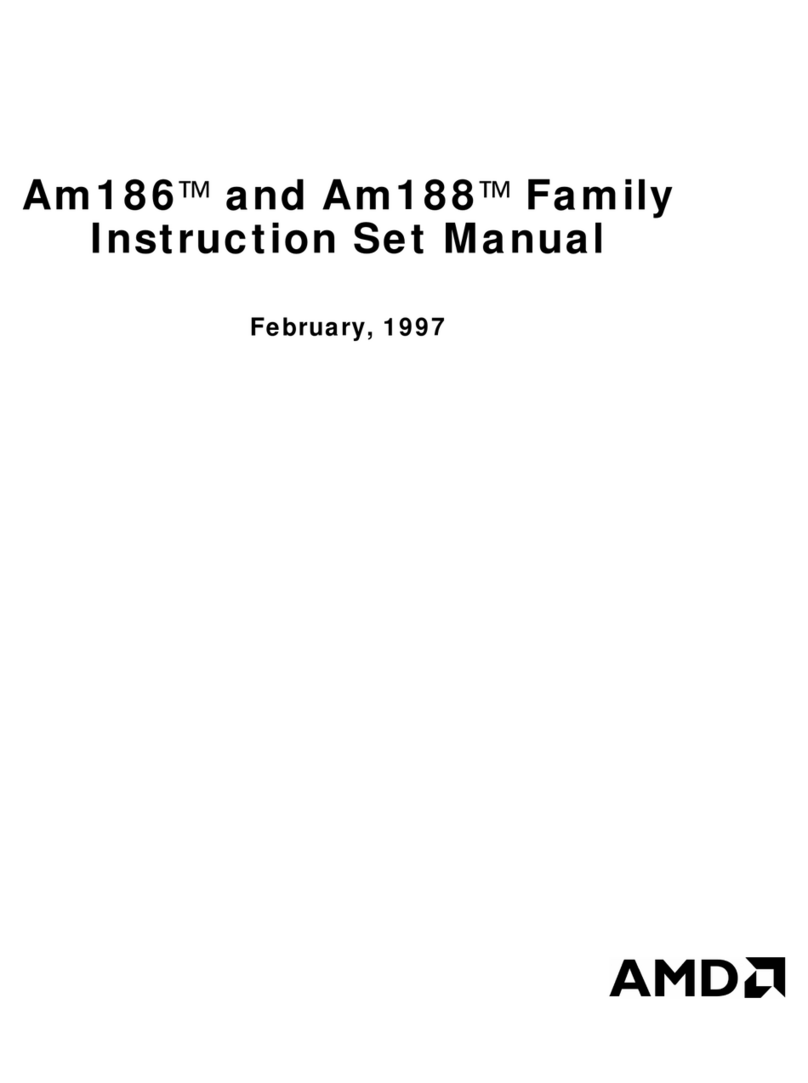
Table of Contents vii
7.4.1 Slave Mode Interrupt Nesting . . . . . . . . . . . . . . . . . . . . . . . . . . .7-28
7.4.2 Slave Mode Interrupt Controller Registers . . . . . . . . . . . . . . . . .7-28
7.4.3 Timer and DMA Interrupt Control Registers
(T0INTCON, Offset 32h, T1INTCON, Offset 38h, T2INTCON, Offset
3Ah, DMA0CON, Offset 34h, DMA1CON, Offset 36h)
(Slave Mode). . . . . . . . . . . . . . . . . . . . . . . . . . . . . . . . . . . . . . . .7-29
7.4.4 Interrupt Status Register (INTSTS, Offset 30h) (Slave Mode) . .7-30
7.4.5 Interrupt Request Register (REQST, Offset 2Eh) (Slave Mode).7-31
7.4.6 In-Service Register (INSERV, Offset 2Ch) (Slave Mode) . . . . . .7-32
7.4.7 Priority Mask Register (PRIMSK, Offset 2Ah) (Slave Mode). . . .7-33
7.4.8 Interrupt Mask Register (IMASK, Offset 28h) (Slave Mode) . . . .7-34
7.4.9 Specific End-of-Interrupt Register (EOI, Offset 22h)
(Slave Mode). . . . . . . . . . . . . . . . . . . . . . . . . . . . . . . . . . . . . . . .7-35
7.4.10 Interrupt Vector Register (INTVEC, Offset 20h) (Slave Mode) . .7-36
CHAPTER 8 TIMER CONTROL UNIT
8.1 OVERVIEW. . . . . . . . . . . . . . . . . . . . . . . . . . . . . . . . . . . . . . . . . . . . . . . .8-1
8.2 PROGRAMMABLE REGISTERS . . . . . . . . . . . . . . . . . . . . . . . . . . . . . . .8-1
8.2.1 Timer Operating Frequency . . . . . . . . . . . . . . . . . . . . . . . . . . . . .8-2
8.2.2 Timer 0 and Timer 1 Mode and Control Registers
(T0CON, Offset 56h, T1CON, Offset 5Eh) . . . . . . . . . . . . . . . . . .8-3
8.2.3 Timer 2 Mode and Control Register (T2CON, Offset 66h) . . . . . .8-5
8.2.4 Timer Count Registers
(T0CNT, Offset 50h, T1CNT, Offset 58h, T2CNT, Offset 60h) . . .8-6
8.2.5 Timer Maxcount Compare Registers
(T0CMPA, Offset 52h, T0CMPB, Offset 54h, T1CMPA, Offset 5Ah,
T1CMPB, Offset 5Ch, T2CMPA, Offset 62h) . . . . . . . . . . . . . . . .8-7
CHAPTER 9 DMA CONTROLLER
9.1 OVERVIEW. . . . . . . . . . . . . . . . . . . . . . . . . . . . . . . . . . . . . . . . . . . . . . . .9-1
9.2 DMA OPERATION . . . . . . . . . . . . . . . . . . . . . . . . . . . . . . . . . . . . . . . . . .9-1
9.3 PROGRAMMABLE DMA REGISTERS. . . . . . . . . . . . . . . . . . . . . . . . . . .9-2
9.3.1 DMA Control Registers (D0CON, Offset CAh, D1CON,
Offset DAh) . . . . . . . . . . . . . . . . . . . . . . . . . . . . . . . . . . . . . . . . . .9-3
9.3.2 DMA Transfer Count Registers (D0TC, Offset C8h, D1TC,
Offset D8h) . . . . . . . . . . . . . . . . . . . . . . . . . . . . . . . . . . . . . . . . . .9-5
9.3.3 DMA Destination Address High Register
(High Order Bits) (D0DSTH, Offset C6h, D1DSTH, Offset D6h). .9-6
9.3.4 DMA Destination Address Low Register (Low Order Bits)
(D0DSTL, Offset C4h, D1DSTL, Offset D4h) . . . . . . . . . . . . . . . .9-7
9.3.5 DMA Source Address High Register (High Order Bits)
(D0SRCH, Offset C2h, D1SRCH, Offset D2h) . . . . . . . . . . . . . . .9-8
9.3.6 DMA Source Address Low Register (Low Order Bits)
(D0SRCL, Offset C0h, D1SRCL, Offset D0h) . . . . . . . . . . . . . . . .9-9
9.4 DMA REQUESTS . . . . . . . . . . . . . . . . . . . . . . . . . . . . . . . . . . . . . . . . . .9-10
9.4.1 Synchronization Timing. . . . . . . . . . . . . . . . . . . . . . . . . . . . . . . .9-11
9.4.2 DMA Acknowledge . . . . . . . . . . . . . . . . . . . . . . . . . . . . . . . . . . .9-12
9.4.3 DMA Priority . . . . . . . . . . . . . . . . . . . . . . . . . . . . . . . . . . . . . . . .9-12
9.4.4 DMA Programming . . . . . . . . . . . . . . . . . . . . . . . . . . . . . . . . . . .9-12
9.4.5 DMA Channels on Reset . . . . . . . . . . . . . . . . . . . . . . . . . . . . . .9-13
CHAPTER 10 ASYNCHRONOUS SERIAL PORT
10.1 OVERVIEW. . . . . . . . . . . . . . . . . . . . . . . . . . . . . . . . . . . . . . . . . . . . . . .10-1
10.2 PROGRAMMABLE REGISTERS . . . . . . . . . . . . . . . . . . . . . . . . . . . . . .10-1
10.2.1 Serial Port Control Register (SPCT, Offset 80h). . . . . . . . . . . . .10-2
10.2.2 Serial Port Status Register (SPSTS, Offset 82h) . . . . . . . . . . . .10-4
10.2.3 Serial Port Transmit Data Register (SPTD, Offset 84h) . . . . . . .10-5
10.2.4 Serial Port Receive Data Register (SPRD, Offset 86h). . . . . . . .10-6
10.2.5 Serial Port Baud Rate Divisor Register (SPBAUD, Offset 88h). .10-7
































